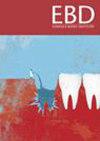Can virtual reality reduce anxiety and pain in dental patients?
Q3 Dentistry
引用次数: 0
Abstract
Nezhad H M, Ashourioun A, Sadeghdaghighi A The effect of virtual reality for anxiety and pain in dentistry: a systematic review and meta-analysis. Community Dent Health 2024; 41: 248–255. A systematic search was conducted across PubMed and Cochrane Library up to April 2024. The article type was limited to Randomised Controlled Trials, comparing virtual reality (VR) interventions with non-VR methods in dental settings. The selection followed the PRISMA-P guidelines. Using the PICOS framework, studies involving dental patients of any age utilising VR during dental treatments and reporting outcomes on anxiety and pain were included. Data extraction and quality appraisal were conducted independently by two reviewers using both the Grading of Recommendations, Assessment, Development, and Evaluations (GRADE) approach and the Risk of Bias 2 (ROB-2) tool. Meta-analyses used a random-effects model. A total of 263 studies resulted in the inclusion of 27 studies, encompassing several dental treatments. Evidence quality ranged from low to moderate. Meta-analysis of 14 studies, encompassing 957 patients, revealed VR significantly reduced anxiety in children (SMD −1.44, 95% CI −2.24 to −0.63, low quality of evidence). Metal-analysis of five studies (485 patients) revealed VR had no effect on adults’ anxiety (SMD -0.35, 95% CI -1.11 to 0.4, low level of certainty). VR significantly reduced pain in both children (11 studies, 791 participants) (SMD −1.11, 95% CI −1.65 to −0.57, moderate level of certainty) and adults (6 studies, 557 participants) (SMD −0.59, 95% CI −1.187 to −0.001, low evidence quality). Heterogeneity was high across studies. The study concluded that VR is a promising intervention for reducing anxiety and pain in children during dental procedures, and pain reduction in adults. The authors suggested further research is needed to standardise the VR content and explore its impact across different age groups and dental procedures.虚拟现实能减轻牙科病人的焦虑和疼痛吗?
相关评论:Nezhad H M, Ashourioun A, Sadeghdaghighi A 虚拟现实对牙科焦虑和疼痛的影响:系统综述和荟萃分析。Community Dent Health 2024; 41: 248-255.Data sources:截至 2024 年 4 月,在 PubMed 和 Cochrane 图书馆进行了系统检索:文章类型仅限于随机对照试验,比较牙科环境中的虚拟现实(VR)干预与非虚拟现实方法。选择遵循 PRISMA-P 指南。利用 PICOS 框架,纳入了涉及任何年龄段的牙科患者在牙科治疗过程中使用 VR 并报告焦虑和疼痛结果的研究:数据提取和质量评估由两名审稿人独立完成,他们同时使用了推荐、评估、发展和评价分级(GRADE)方法和偏倚风险2(ROB-2)工具。元分析采用随机效应模型:共有 263 项研究,最终纳入了 27 项研究,包括多种牙科治疗方法。证据质量从低到中等不等。对 14 项研究(包括 957 名患者)进行的元分析表明,VR 能显著减轻儿童的焦虑(SMD -1.44, 95% CI -2.24 to -0.63,证据质量低)。对五项研究(485 名患者)进行的金属分析表明,VR 对成年人的焦虑症没有影响(SMD -0.35,95% CI -1.11 至 0.4,证据确定性低)。VR 能明显减轻儿童(11 项研究,791 名参与者)和成人(6 项研究,557 名参与者)的疼痛(SMD -0.59,95% CI -1.187 -0.001,证据质量低)。不同研究之间的异质性很高:研究得出结论:VR 是一种很有前景的干预方法,可以减轻儿童在牙科治疗过程中的焦虑和疼痛,并减轻成人的疼痛。作者建议需要进一步研究,以标准化 VR 内容,并探索其对不同年龄组和牙科手术的影响。
本文章由计算机程序翻译,如有差异,请以英文原文为准。
求助全文
约1分钟内获得全文
求助全文
来源期刊

Evidence-based dentistry
Dentistry-Dentistry (all)
CiteScore
2.50
自引率
0.00%
发文量
77
期刊介绍:
Evidence-Based Dentistry delivers the best available evidence on the latest developments in oral health. We evaluate the evidence and provide guidance concerning the value of the author''s conclusions. We keep dentistry up to date with new approaches, exploring a wide range of the latest developments through an accessible expert commentary. Original papers and relevant publications are condensed into digestible summaries, drawing attention to the current methods and findings. We are a central resource for the most cutting edge and relevant issues concerning the evidence-based approach in dentistry today. Evidence-Based Dentistry is published by Springer Nature on behalf of the British Dental Association.
 求助内容:
求助内容: 应助结果提醒方式:
应助结果提醒方式:


